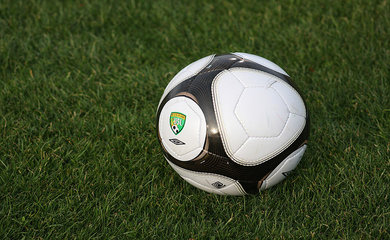The US National Women’s Team utterly routed their Japanese counterparts in the thrilling World Cup final in Vancouver on Sunday, making sports history. The women also made history for another reason: It was the most-watched football game in US history, period, with 25.4 million viewers on Fox and another 1.3 million on Telemundo. Twitter was on fire with commentary on Sunday night as the US women made four goals in the first 16 minutes—three scored by Carli Lloyd in a stunning hat trick—and the team’s success is sparking a real conversation about women’s sports in the US.
Like, maybe it’s time to stop referring to them as ‘women’s sports’ and just call them sports, since that’s what they are. The US Women’s National Team performs far better than the men, yet they make 40 times less, and aren’t the focus of football coverage in the US—which is already paltry, as most US sports fans are far more interested in American football. When the women’s team does get its due, it’s usually with the constant reminder that they’re considered secondary, via the gender qualifier.
As the team just demonstrated, they’re clearly capable of holding their own on the field, as this is their third World Cup win. They’re outstanding performers not just in women’s football, but in the football world in general, and separating women’s sports out from men is a disservice, in addition to highly sexist. While leagues may be gendered, that doesn’t mean sports coverage needs to be.
This game was notable for its incredibly high ratings and adrenaline rush, but also because it was aired at all. Many women’s teams don’t make it to primetime, or are wedged into slots in the schedule wherever they’re convenient, even if it means running a match after it took place. Men’s teams receive scheduling priority in addition to much wider coverage—the brouhaha over the Superbowl in the US illustrates the nation’s obsession with men’s sports. Women’s tennis is perhaps the only example of gendered sport taken seriously by large numbers of people in the US, thanks in no small part to the fame of the Williams sisters; without them, coverage of tennis would likely be much more scant.
In some cases, women’s teams don’t make it to broadcast at all, even during the Olympics, in which athletes at their peak are competing on a global scale. Women in sport are repeatedly classified as lesser.
As ESPN celebrates its annual body issue, famously featuring the nude bodies of sports stars in dynamic poses, the magazine has a balance of two covers featuring women and two featuring men, but the social response hasn’t been entirely positive. Hammer thrower Amanda Bingson has been making headlines not for her athletic prowess, but for the fact that her body doesn’t meet gendered expectations for slim, slightly muscular bodies. Instead, she’s ‘dense,’ as she describes herself, without overt muscle definition and complete with visible body fat, though few people could compete on her level. The response to her defiant cover, and interview, highlights the way people in the US relate to female athletes, and ties directly into the insistence on separating out women’s sport as though it’s somehow novel; women in sport are classified by their relationship to other people and to gender, rather than as the athletes they are.
The women won 5-2 over Japan, a rather decisive victory that clearly motivated viewers who not only tuned in for the highly hyped event, but stayed glued to their televisions despite the fact that many view football as a dull sport. Ratings for this World Cup match didn’t just outperform any other aired in the US, but also a number of other key sports matches in American football, basketball, and baseball, the state’s most beloved sports franchises. Many NCAA, MLB, and NBA matches don’t get this kind of viewership.
To put the capper on the team’s victory, the match finished with the now-iconic image of Abby Wambach crossing the field as she ran for her wife to celebrate the team’s win—a moment particularly poignant for a nation that had just decisively legalised same-gender marriage across the country. Wambach’s history as an out lesbian in sport has marked her out as a trailblazer in a world that still views LGBQT athletes with suspicion, paving the way for other gay athletes preparing to enter the sporting world much as tennis player Billie King did in the 1980s.
These are not the actions of a team that needs to be singled out and boxed away because it comprises entirely women. The US National Women’s Team is simply a football team that happens to feature a number of extremely talented female athletes who should be celebrated for their contributions to sport. It’s possible to recognise the hurdles they face as women in sport, not erasing their gender altogether, but it’s equally important to recognise that repeatedly referring to them as a ‘women’s team’ and to their sport as ‘women’s football’ is one of those sexist hurdles.
The sport this team plays is football. Not ‘women’s football.’ The rules are the same, and when it comes down to hitting the field, all that matters is athletic performance, not gender. Athletes either have it or they don’t, and by the looks of things, the US National Women’s Team is far more deserving of a gender-neutral handle than the men—because men’s football in the US doesn’t look terribly good when compared to women’s.
Photo by Jarrett Campbell, licensed under a Creative Commons Attribution 2.0 Generic license.

